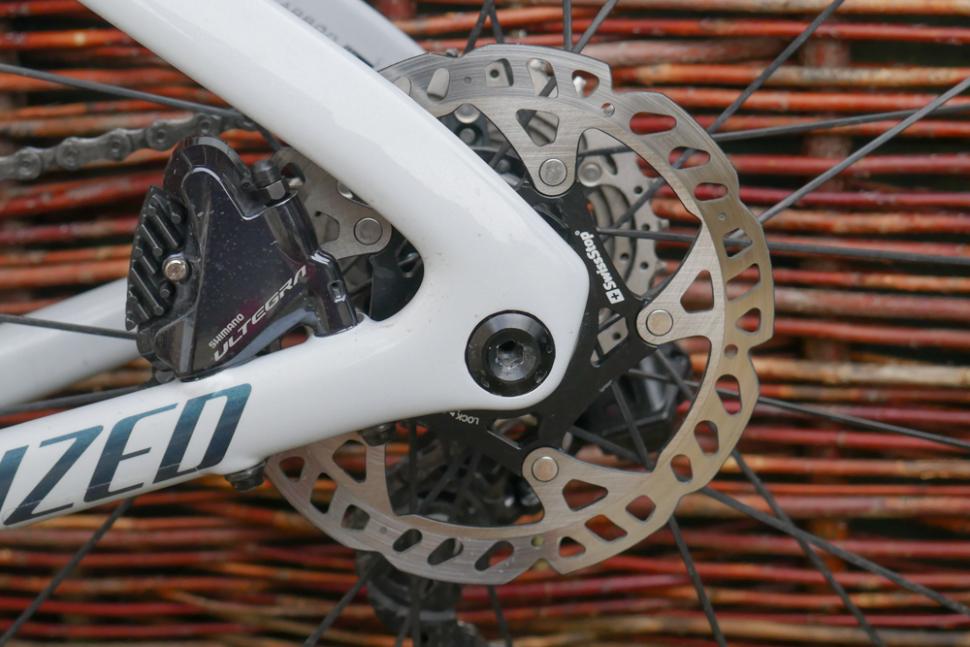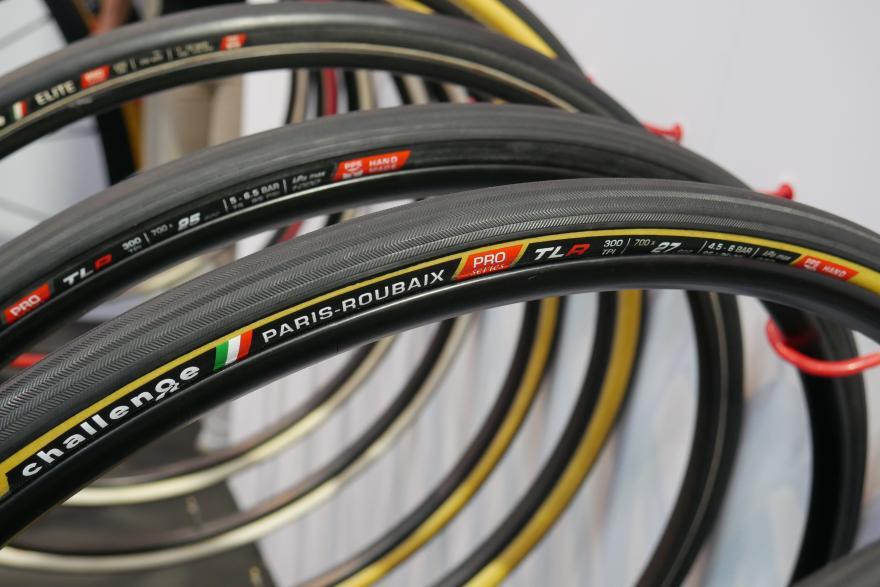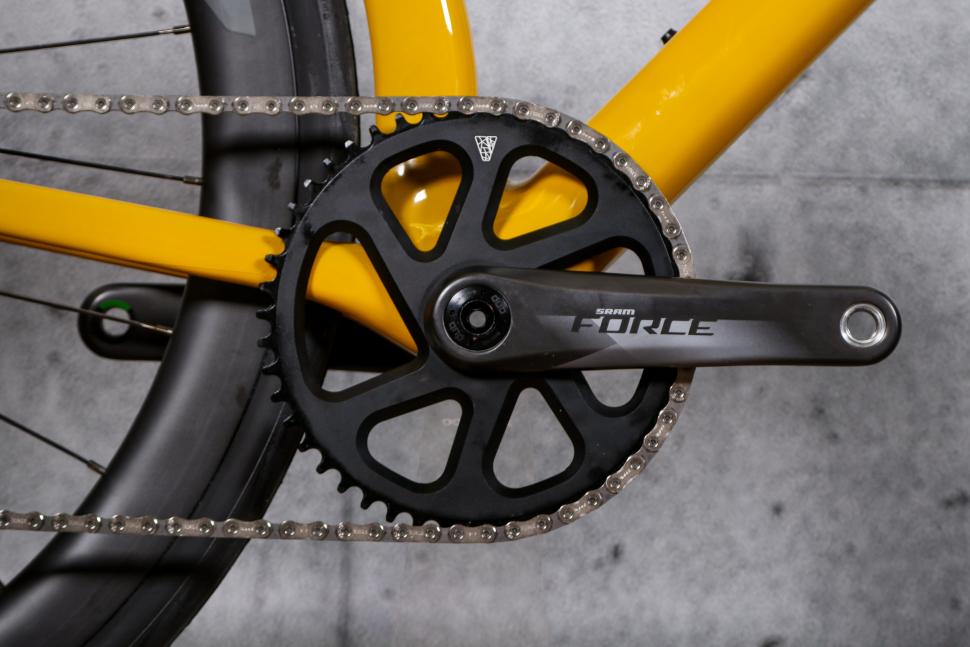- News
- Reviews
- Bikes
- Accessories
- Accessories - misc
- Computer mounts
- Bags
- Bar ends
- Bike bags & cases
- Bottle cages
- Bottles
- Cameras
- Car racks
- Child seats
- Computers
- Glasses
- GPS units
- Helmets
- Lights - front
- Lights - rear
- Lights - sets
- Locks
- Mirrors
- Mudguards
- Racks
- Pumps & CO2 inflators
- Puncture kits
- Reflectives
- Smart watches
- Stands and racks
- Trailers
- Clothing
- Components
- Bar tape & grips
- Bottom brackets
- Brake & gear cables
- Brake & STI levers
- Brake pads & spares
- Brakes
- Cassettes & freewheels
- Chains
- Chainsets & chainrings
- Derailleurs - front
- Derailleurs - rear
- Forks
- Gear levers & shifters
- Groupsets
- Handlebars & extensions
- Headsets
- Hubs
- Inner tubes
- Pedals
- Quick releases & skewers
- Saddles
- Seatposts
- Stems
- Wheels
- Tyres
- Health, fitness and nutrition
- Tools and workshop
- Miscellaneous
- Cross country mountain bikes
- Tubeless valves
- Buyers Guides
- Features
- Forum
- Recommends
- Podcast
feature
 2021 Specialized Diverge Expert Carbon - riding 1.jpg
2021 Specialized Diverge Expert Carbon - riding 1.jpg6 ways that gravel bikes have improved road bikes
For years, most major bike tech innovations happened in the world of mountain biking as riders rode ever more incredible lines and demanded more from their bikes, but these days it's gravel bikes that have the most influence over road bike design. Here are six ways in which gravel is helping to develop road bikes, and why you should try them out.
It's first worth admitting that the road market is generally resistant to change. Before the gravel market was a thing, road bike technology was quite slow-moving. Sure, fancy frame materials came along and aero wheels became popular, but the basic design points of a road bike remained the same. Make it light, make it skinny and make it stiff.
Being led by the needs of the professional race peloton doesn't help in this respect. Racers like consistency in their equipment and they'll use what works, but the real issue is that what's best for a skinny road racer that rides 30 hours per week at warp speed isn't necessarily best for the recreational roadie.
Plus, there are equipment rules that arguably stifle innovation. The UCI only permitted disc brakes in road racing on a permanent basis (after a trial period) in 2018, for example.
Disc brakes came to road biking via mounting biking, of course. Before discs, mountain bikes stopped using either cantilevers or V-brakes. Then some bright spark decided that disc brakes would be a good idea and, funnily enough, they were.
These days, disc brakes are the only option for a mountain bike bought in a decent bike shop and they're now being widely adopted in the road bike world.
That said, we roadies haven’t got disc brakes dialled just yet. There are certainly improvements to be made, but Rome wasn’t built in a day, as the saying goes.
Chris Froome: "I don't think disc brake technology is quite where it needs to be"
Okay, so after that tip of our hat to the mountain bike world for all of the help it has given to road bike technology over the years, here's how gravel bikes have been leading the way...
Wider tyres
From the days of the 19mm tubular tyre at rock-solid pressures, through the age of the 23mm tyre and finally, to the present day race option that sits somewhere between 26mm and 28mm, depending on who you ask, road tyres have been getting steadily wider and we’d argue that a lot of the credit for that goes to gravel. In particular, we have to thank the gravel race market that is so prominent in America, with its 200-mile events and thus its need for wide rubber that is still fast.
Studies from the likes of Hunt have focused on how best to make these wider tyres as fast as possible and the idea of using rims that are wider internally has made its way over to the road market.
From the 17mm inner rim widths that road wheels used just a few years ago, through 19mm and up to 23mm that we are seeing lately, the wider inner width has been used to support those increasingly wide tyres.
Hunt’s aero testing also suggests that making the wheel/tyre interface as smooth as possible – creating a straight tyre sidewall – is key to those aero gains.
But wider tyres aren’t all about aerodynamics. Going wider can allow you to reduce tyre pressure for the same rolling resistance. This makes the tyre better able to deform over objects and that helps with comfort as well as grip.
Rolling resistance: why you need to choose your tyres carefully if you want to ride faster
With wider tyres, you’ve also got a larger contact patch on the road which really helps in wet conditions. If you can fit wider rubber into your frame, we'd strongly suggest giving it a try.
Comfy aero bikes
If your idea of the perfect Sunday is a 200-mile race on bumpy gravel roads then the two things that you’ll want from your bike are comfort and aerodynamic efficiency. Gravel race bikes like the 3T Exploro Race Max are the perfect example of just how far the gravel market is pushing bike designers.
3T launch 'faster and more aero' Exploro RaceMax gravel bike
The deep frame tube shapes and tight tyre clearances point to frames that are slippery through the air in a straight line, while the space for wide tyres gives gravel riders the grip and comfort that they need to tackle those brutal races.
You’ll also see frame geometries that are a bit more relaxed as the last thing that you want when racing such distances is for your back to seize up. You'll see this in shorter reaches and taller head tubes.
Bike geometry 101: Find out why stack & reach are important
What has this meant for us road riders? Well, the fact that we can have aero and comfort in the same frameset means that the average rider that likes to go fast but doesn’t suit a pro road race geometry can have a bike that perfectly suits their needs, rather than compromising.
There are a few bikes on the market that fit the bill perfectly. Canyon's Endurace, the Specialized Roubaix and Trek's Domane all combine a slightly more relaxed geometry with aero frame shapes.
Tubeless tyres
While mountain bikes have been rolling on tubeless tyres for years, the road market has only really begun to adopt them recently and part of the reason is that the gravel market showed that it was both possible and hugely advantageous to do so with the smaller tyre widths.
Gravel riders like tubeless tyres for the ability to run lower pressures for more grip and better comfort without the fear of pinch puncturing an inner tube. The use of tubeless on gravel setups has brought tyre technology forward with tubeless fitting and tyre security getting better and better.
> Fitting tubeless tyres – learn how with this simple guide
Increasingly, this comes in the form of wheels brands releasing lists of what they class as compatible tyres to use with their rims. Enve and Giant have both tested a range of popular tyre choices for their compatibility with rims, performance in use and safe inflation pressures.
Casing technology has also improved with the likes of Challenge, Veloflex, Vittoria and Dugast amongst the brands to have adapted their super supple high thread count cotton casings to retain air when made tubeless. This means that road riders who love their supple tyres can also go tubeless.
Like disc brakes, some tubeless systems can be less than perfect but with the technology improving each year, this is one to consider seriously.
Tubeless inserts
There is a length of foam that you might want to consider to go along with your new tubeless tyres. Still a relatively new technology in the road market outside of professional racing, tubeless inserts are just making their way into the wheels of recreational road riders.
The point of these pool floats for your wheels is to protect the rims from impacts when you're running low tyre pressures. The pro racers seem to be fond of these in the cobbled classics and there is another reason that we are seeing them come over to the road market.
Tubeless inserts - the next big advance in road tubeless tech? Here are your options
Tyre security in the event of a puncture is supposedly vastly improved. That means that should you suffer a flat, the tyre is less likely to roll off the rim and this allows you to continue riding the tyre until you either find your team’s mechanic to change the wheel for you, or you find a safe place to stop and repair the puncture yourself.
Vittoria launches run-flat Air-Liner inserts for road bikes
Vittoria is the first brand to have brought tubeless inserts to the road market and we’ve had them in for testing. Head this way to see what we thought of them.
Frame clearance
Look at modern road race bikes like the Specialized Tarmac SL7, Giant’s TCR Advanced and Trek’s Emonda and you’ll notice that there’s a lot of space around the tyres. Many will take up to a 32mm tyre and the reason for all of this room is those wider tyres that have come over from the gravel market.
On endurance road bikes, the added frame clearance is brilliant for those that want to combine wider tyres with full-length mudguards and on race bikes, the added space means that riders can fit wider tyres when using roads that aren’t well surfaced.
1x drivetrains
1x drivetrains are massively popular on gravel and cyclocross bikes, and dominate in mountain biking.
One reason for this is mud clearance which, as you’ll know if you’ve ever ridden through heavy mud, is rather important though, unless your road route has taken a wrong turn, this isn't usually an issue on road bikes. For off-road riding though, removing the front derailleur gives mud one less place to build up and the benefits don’t stop there.
Removing the front derailleur is also said to be more aerodynamically efficient, so for road race bikes, it could be a marginal gain worth looking at.
The slight issue for the road comes with the gearing. While the range provided by a 1x12 or 1x13 drivetrain can easily be made wide enough to tackle both steep hills and fast flat roads, the gaps between gear ratios are generally larger than those found in a 2x system. This shows itself in more noticeable cadence changes when you change gear.
Bike brands like Vielo believe that it is the way forward and during testing, road.cc reviewer Stu Kerton thought that the 1x system was perfect for his hilly rides.
Read our review: Vielo R+1 Alto SRAM Force e-Tap AX
Where do you stand on the gravel market's contribution to road bike tech? Is there a change that you love? Is there something that you wish you could send back to 2012? Let us know in the comments below.
Latest Comments
- Motdoc 2 hours 52 min ago
You don't benefit from schools? You've never seen a doctor, a dentist, a teacher, didn't go to school yourself and don't care about the tax paying...
- thax1 4 hours 21 min ago
Another 'sound-alike' mid tier offer, so I get all excited and buy a bunch of them thinking I've got an absolute steal. Only to then realise I've...
- mdavidford 4 hours 30 min ago
first cast out the beam out of thine own eye
- eburtthebike 5 hours 52 min ago
Which is, ironically, very rare.
- mark1a 5 hours 53 min ago
New addition to the fleet, a Specialized Aethos. This is the Comp model, 12 speed 105 Di2, 10r carbon layup in pearlescent white, with upgraded...
- hawkinspeter 7 hours 1 min ago
Local 'nimbyism' dismissed as consensus is new scheme will 'increase footfall'...
- chrisonabike 7 hours 49 min ago
If they're formally recognising phone addiction, and have noted that our eating habits (driven by stuff people want to sell us) are obeseogenic ......
- Secret_squirrel 10 hours 59 min ago
Yes. Just like there's no push rod brakes or U brakes any more. Get with the program granddad.
- dreamlx10 11 hours 37 min ago
Looks like the perpetrators were not Italian








Add new comment
2 comments
typo - "mountain biking", not "mounting biking"
Isn't that how mummy and daddy bikes make baby balance bikes?